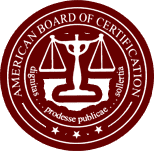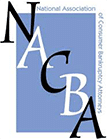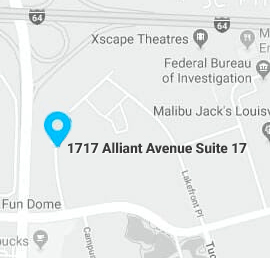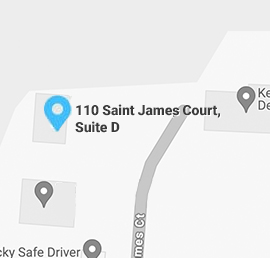KY Student Loan Lawyer

Student Loans and Bankruptcy
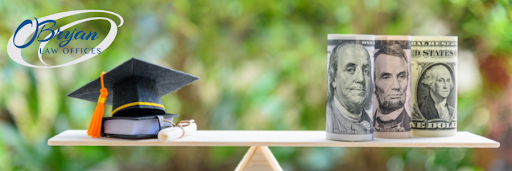
What to Know About Student Loans and Bankruptcy
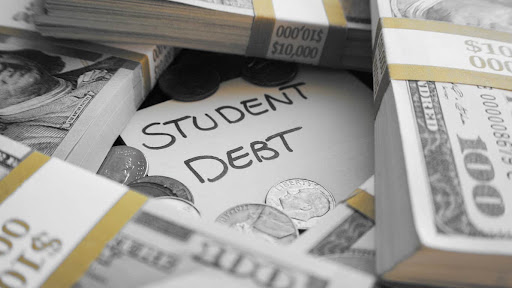
Before you decide to proceed, there are a few things you should know about student loans in bankruptcy. We list these considerations below.
- Some people end up owing more on their loans through repayment plans than if they had gone with another route. The court decides how much you pay each month to your creditors. If certain other debts of yours are in a higher priority than your student loans, you might accrue more interest on your loans in the end.
- If student loans are your only form of debt, it’s probably not a good idea to file. In fact, the Department of Education views this as someone trying to avoid paying their student debts by declaring bankruptcy. Furthermore, you’re very unlikely to win your case if that’s your only form of debt.
- Your chances of getting a loan discharged partially depend on what type of loan you have. Generally speaking, private loans do not offer income-driven repayment plans, or IDRs. Federal loans, however, do have this option. In many cases, bankruptcy courts argue that, if you qualify for an IDR plan, you can afford to pay back your loans.
- Filing for bankruptcy costs money. Unless the court decides to waive them, you must still pay a filing fee. When you’re thinking of filing, it’s a good idea to go with a Kentucky bankruptcy lawyer who has had success with loan discharges in the past.
What Is Student Loan Bankruptcy?
It’s likely that you’ve heard that you absolutely cannot have your student loans discharged through bankruptcy. Luckily, this statement is a gross oversimplification of the truth. It is actually possible to have your student loans discharged in very specific circumstances. However, the bar is much higher to accomplish this, and the process is more complicated than for other forms of debt.
It’s possible that initiating a bankruptcy filing to have your student loans discharged could get easier in the near future. A recently introduced bipartisan bill called the Fresh Start Through Bankruptcy Act of 2021 plans to do this. The Act aims to give borrowers with federal student loans the chance to seek out a bankruptcy discharge for their student loans. This opportunity, if the bill is passed, will allow them to seek a student loan discharge 10 years after their first loan payment was due.
Additionally, the Act makes it possible to keep the current undue hardship discharge option. This is available for both private student loan borrowers and federal student loan borrowers when their loans have been due for less than 10 years.
How Does Student Loan Bankruptcy Work?
If you’ve reached the point where you’re considering bankruptcy filing for student loan debt, it’s very likely that missed or late payments have already affected your life. When you fall behind on student loan payments, you might experience wage garnishment if a creditor makes a claim against you. It’s also possible that the federal government kept your tax refund and put it toward your federal student loans.
Many people face more than just the debt associated with their federal student loans or private student loans. In fact, if that’s the only hardship you’re facing financially, you’re unlikely to qualify to have your student loan debt discharged. Filing for a student loan bankruptcy isn’t as easy as filing for Chapter 7 bankruptcy or Chapter 13 bankruptcy. It also doesn’t guarantee that you’ll walk away without any debt. However, if you have bad credit, bankruptcy might be a better option for achieving financial stability than continuing to struggle under the weight of your debts.
Here’s the kicker: there is no special type of bankruptcy called “student loan bankruptcy.” In order to succeed in discharging student loans through bankruptcy, you must file for Chapter 7 or Chapter 13. Once you start the bankruptcy process, you must then file an adversary proceeding (AP). In order to even be considered for discharging student loans, you must file the AP.
Determine Which Bankruptcy Chapter Is Right for You
As we stated previously, you must file for either Chapter 7 or Chapter 13 before you may petition a judge for a discharge of your student debt. With the help of your bankruptcy student loan attorney, you’ll have to complete an extensive amount of paperwork. This paperwork will include asset disclosure, expenses, debts, and current income. Then, the bankruptcy court assigns an impartial bankruptcy trustee to your case. This trustee will meet with creditors and confirm your debts. Additionally, you have to undergo an approved Kentucky credit counseling program before the bankruptcy court begins bankruptcy proceedings.
Declaring bankruptcy is one of the many ways that struggling borrowers can achieve debt relief when they’ve fallen behind on their payments. When you declare bankruptcy, the automatic stay goes into effect. This will halt collection activities from creditors and stop you from further spiraling into debt. Debt collectors will finally leave you alone until the bankruptcy court allows them to continue with their collections. Additionally, you can stop wage garnishment when you start your bankruptcy case.
Chapter 7 Bankruptcy
Chapter 7, or liquidation bankruptcy, involves your bankruptcy trustee selling off your nonexempt assets. Depending on the state you file in, exempt assets vary. However, they typically include your home, vehicle, and personal belongings. Once your nonexempt assets are sold, the trustee uses a significant portion of your proceeds (or all of them) to pay off as much of your debt as possible. Then, the bankruptcy courts discharge the remaining balance on your debts.
In order to actually file Chapter 7, you must not have had another Chapter 7 discharge within the past 8 years. Additionally, your current monthly income must be below your state’s median income. Alternatively, you must pass the Chapter 7 means test. It’s also important to note that you cannot discharge certain debts, like taxes, alimony, or child support.
In its entirety, Chapter 7 usually lasts around a few months, so it’s fairly quick. This does, however, depend largely on the complexity of your situation. After you complete your Chapter 7 filing, you may file for student loan forgiveness (discharge).
Chapter 13 Bankruptcy
If you can’t pass the Chapter 7 means test, you’ll likely have to file for Chapter 13 bankruptcy. Another reason for choosing this chapter is saving your home from foreclosure, which can happen if you have too much equity in the property. The Bankruptcy Code refers to Chapter 13 as a reorganization bankruptcy.
Chapter 13 involves the creation of a repayment plan which can use up to 100% of your disposable income to pay back your creditors. The plan usually spans over a three to five year period. Your trustee will supervise the repayment plans, as well as collect your monthly payments and distribute them to your creditors.
Depending on your specific situation, the court will outline your new monthly payments, which will include your student loan payment. Chapter 13 often helps those who struggle to meet their monthly payment on student loans and can’t lower those payments in another way. This is often the case if a student loan borrower has private student loans. Private student loans in bankruptcy offer fewer options than a federal student loan would.
Why Can’t People Get Rid of Student Loans Through Bankruptcy Now?
While it’s not currently impossible to discharge student loans, it can be a very difficult process. In fact, a law passed in 1976 intentionally limited the student loan discharge. An amendment to the Higher Education Act of 1965 made student loans nondischargeable unless the following two criteria are met.
- Over 5 years have passed since you began repayment.
- Not discharging them would cause the debtor and the debtor’s dependents to suffer undue hardship.
Two years later, in 1978, Congress enacted the Bankruptcy Code of the United States. Since then, it has become increasingly difficult to discharge your student loans through bankruptcy. What Congress failed to do, however, was define exactly what undue hardship means.
Bankruptcy court judges are responsible for the development of an undue hardship standard test. Depending on the state in which you live, the judge in your case will use either the Brunner test or the totality of circumstances test.
The Proposed Law to Allow Bankruptcy for Student Loans
Currently, a new bill has been announced, called the FRESH START Through Bankruptcy Act of 2021. While not currently law, it proposes allowing debtors to have an easier time discharging their student loans through bankruptcy.
The bill would allow federal borrowers to achieve eligibility for bankruptcy proceedings when they reach 10 years after their first loan payment is due. Those whose loans are under 10 years old must go through the current process.
How to Prove Undue Hardship for Student Loans
Even though Congress continued to make it more difficult to discharge student loans, the courts tend to look at the following circumstances when determining undue hardship.
- What type of loans do you have? Federal or private? In general, it tends to be harder to discharge federal loans because they allow for income driven repayment plans. Private lenders usually don’t offer this.
- What is your interest rate? Calculate this figure in order to show that, even if you made more money, you still wouldn’t put a dent in your debt.
- How long is your repayment period? The inability to pay the loans has to last for a significant part of your repayment period.
- Other questions include the following:
- What repayment plans does the lender offer you?
- Are you eligible for student loan forgiveness?
- How much do you owe?
- What have your annual earnings looked like?
- How much do you make each month?
- Do you have significant monthly expenses?
There is a multitude of other questions and considerations you can use to prove undue hardship. Work closely with your trusted law firms to figure out a strategy that works for you.
The Brunner Test
This test was first used in 1987, after Marie Brunner attempted to file bankruptcy in order to get rid of her student loans. When the New York State Higher Education Services Corporation appealed the initial decision, the court judge presiding over the case developed the three-prong test. We list the three criteria below.
- Based on their current financial situation, the debtor cannot maintain a minimal standard of living if they must repay their student loans.
- The above situation will likely continue for a large part of the repayment period.
- They have made good faith efforts to repay their loans.
The “Totality of Circumstances” Test
In recent years, some courts have rejected the Brunner test in favor of a totality of circumstances test. Rather than considering the “good faith” aspect of the Brunner test, the courts considered the following.
- The past, current, and future financial situation of the debtor.
- Calculations of the debtor’s and their dependents’ monthly living expenses.
- Other relevant information or circumstances surrounding that particular case.
Contact a Kentucky Student Loan Bankruptcy Attorney Today
At O’Bryan Law Offices, we understand that student loan debt can pile up and feel insurmountable. Luckily, our Kentucky bankruptcy attorneys have more than a few options to help your situation. Even if bankruptcy doesn’t end up being an option, we offer both Kentucky debt counseling and credit counseling to those who need it. For more information about how we can help you reduce or eliminate your debt, please call us at 502-339-0222 or fill out our online intake form today.

